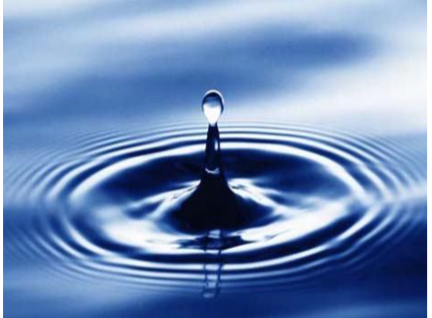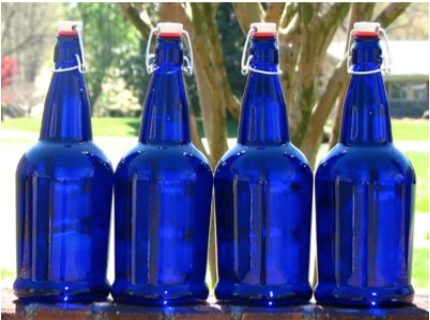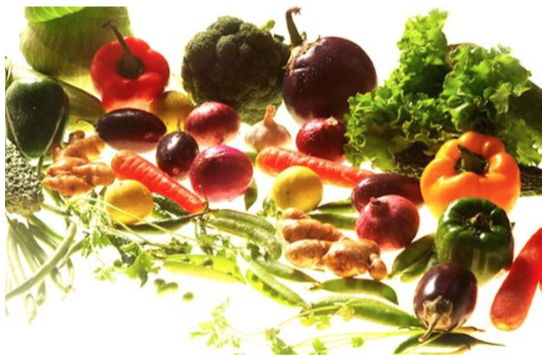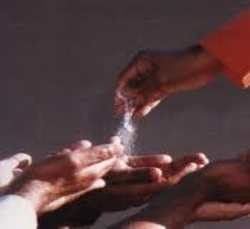In Addition
Vol 4 Τεύχος 4
July/August 2013
Sai Vibrionics offers health information and articles for educational purposes only; this information is not meant as medical advice. Counsel your patients to see their medical doctor about their specific medical condition.
Living Water for Your Health

Water is the most important beverage for us to survive. We can survive for weeks without food but without water, we may not survive for more than 3 to 5 days in most cases.
As all are aware, water constitutes almost 70% of our body weight. It therefore implies that water is needed by all organs and organ systems of the body for their optimal working. Water is needed right from hydrating the body to the transportation of nutrients to being involved in many chemical reactions going on in the body. One of the primary functions of water at a cellular level is to carry nutrients to organisms, and to efficiently carry away and dilute waste products. Water has also been referred to as "nature's universal solvent". It is needed by all life forms and ecological systems, and by every major sustaining activity and industry.
In times past, water was deeply respected, often revered, as the essential fluid to all life - in the stages of conception, birth, growth, and sustenance, and to the healing of disease. The same is true today - the importance of water to our well-being cannot be overemphasized.
Simple water is already one of the healthiest things you can drink. You are probably already drinking eight glasses of water a day. But does it make any difference which water you use?
Health enthusiasts all over the world believe that not all water is equally good for us. They even divided water into "dead" and "live" water.
"Dead" water is water laden with foreign substances and frequencies. It is often full of the effects of electromagnetic radiation of various kinds, particularly man-made, as well as physical and energetic pollutants of all kinds. Water from commercial water producers or municipal services usually can be considered as "dead" water.
"Live" water is something different. It is more alive, ‘wetter’, meaning that it does a better job of picking up and removing toxic material from the body. It is the nearest thing to cellular water, and its life- enhancing frequencies are gratefully absorbed by dehydrated and exhausted cells of our body.
Such water is known by many names: energized water, structured or restructured water, hexagonal water, reduced cluster size water, organized water and many others.
The best source of "live" water is a natural spring-well. True spring water often has a shimmering, bluish colour. Consider yourself lucky if you have access to such water. For the rest of us, there are many ways to improve your regular water, to make it energized.
The Internet is full of sites selling you any kind of water energizing devices, crystals or pills. We do not feel comfortable to recommend any of these sites, and would like to share one simple method of improving your water. This method is based on the colour therapy and does not require any chemicals or special device. We call it Blue Solar Water method.

What Is Blue Solar Water?
Blue water is nothing but plain drinking water kept in a blue colored transparent bottle for a particular period of time.
Why The Colour Blue Of All The Colours?
-
Blue is associated with rest, relaxation, sleep, regeneration, and communication.
-
Blue decreases blood pressure and heart rate, relieves nervousness and stress, and is a very soothing colour.
-
It is very effective in the treatment of headaches and sleep disorders.
-
Blue is also a highly effective colour for meditation, communication, spiritual growth, and high mental qualities.
-
Blue brings out the creative power and gives peace.
-
How to Make Blue Solar Water
-
Place culinary water (tap, filtered, artisan, bottled, etc.) in a blue glass bottle. You can use any color of blue glass bottle from the deep cobalt blue to a light cyan blue.
-
Cap the bottle with plastic, cork or cloth, any material but metal. You do want to put a lid or some cover over the mouth of the bottle, to keep bugs and flies out. Do not use a metal cap.
-
Place the bottle of water outside during daylight hours for at least one hour. The bottle does not need to be in direct sunlight, but does need to be where sunlight gets to it. You can make blue solar water on a cloudy day or on a shaded patio.
-
You cannot make solar water through a glass window. A glass window pre-filters the sunlight before it hits the blue glass, hindering the process.
-
As long as the blue glass bottle is outside, where it is receiving light from the sun (even if it is in shadows, so long as it is not completely blocked from receiving any light), it will create Blue Solar Water.
-
The longer you leave the water outside in the sunlight, the better it gets. You can leave the water outside all day. You can put the water out at night or before dawn to catch the first morning sunrays, which seems to raise the energy vibration of the Blue Solar Water.
-
Once made, you can store it in any container you wish. It is fine to store it in plastic, or any other container you wish, once you have made it. You could put a metal lid on the storage container.
-
Add Blue Solar Water to other water last to make it all Blue Solar Water. Fill a cup, pitcher, etc., with water and then top it off with Blue Solar Water to make it all Blue Solar Water.
Ideas for Blue Solar Water Use
-
Drink Blue Solar Water for hydration and refreshment, to help remove toxins and for healing. You can also gargle with this water.
-
Use Blue Solar Water for cooking to improve the taste of foods.
-
Bathe in Blue Solar Water to feel relaxed and refreshed, and to help remove toxins from your body. Blue water tends to darken the hair, so do not use it excessively on the hair if you wish to maintain the light colour.
-
Use it to water indoor and outdoor plants.
There are many more health benefits of using Blue Water. You may want to search the Internet for it and you will be surprised to see what people are saying about this wonderful living water.
Sources:
http://www.life-enthusiast.com/nhs02-super-hydrate-with-energized-water-a-5358.html
http://www.energizewater.com/index_files/wiew1.htm http://rajanjolly.hubpages.com/hub/Health-Benefits-Of-Water-Blue-Water http://www.robinskey.com/blue-solar-water/
http://www.blueiris.org/community/index.php?option=com_content&view=article&id=87&Itemid=131
Asthma and Diet

Asthma is a chronic disease characterized by recurrent attacks of breathlessness and wheezing, which vary in severity and frequency from person to person. During an asthma attack, the lining of the bronchial tubes swells, causing the airways to narrow and reducing the flow of air into and out of the lungs.
Key Facts from the World Health Organization
-
Asthma is a chronic disease of the bronchi - the air passages leading to and from the lungs.
-
It is the most common chronic disease among children.
-
Most asthma-related deaths occur in low and lower-middle income countries.
-
The strongest risk factors for developing asthma are inhaled substances and particles that may provoke allergic reactions or irritate the airways.
-
Medication can control asthma. Avoiding asthma triggers can also reduce the severity of asthma.
-
Asthma is difficult to cure but appropriate management of asthma can enable people to enjoy a good
quality of life.
The Causes
The fundamental causes of asthma are not completely understood. The strongest risk factors for developing asthma are a combination of genetic predisposition with environmental exposure to inhaled substances and particles that may provoke allergic reactions or irritate the airways, such as:
-
indoor allergens (for example, house dust mites in bedding, carpets and stuffed furniture, pollution and pet dander)
-
outdoor allergens (such as pollens and moulds)
-
tobacco smoke
-
chemical irritants in the workplace
-
air pollution.
Other triggers can include cold air, extreme emotional arousal such as anger or fear, and physical exercise. Asthma can be triggered even by certain medications such as aspirin, other non-steroid anti- inflammatory drugs and beta-blockers (which are used to treat high blood pressure, heart conditions and migraine).
The Diet
This section is focused on the important role that diet plays in the life of an asthma sufferer. Diet can help reduce the hyperactivity of immune cells so that they are less reactive to air pollution and allergens. Certain nutrients also help neutralize the free radicals produced, which may reduce the severity or frequency of asthma attacks and improve the function of the lungs. A healthy appropriate diet definitely has a positive impact on many people suffering from asthma. Food should be taken at regular intervals in controlled amounts to avoid overloading of stomach, which may initiate an asthma attack.
There is evidence that people who eat diets higher in vitamins C and E, beta-carotene, flavonoids, magnesium, selenium, and omega-3 fatty acids have lower rates of asthma. Many of these substances are antioxidants, which protect cells from damage.
-
Vitamin C-rich foods: Fruits and vegetables are essential to keep lungs healthy. Vitamin C is extremely beneficial for asthma patients who experience exercise-induced hyperactive airways. Foods rich in vitamin C are grapes, tomatoes, pineapples, watermelons, citrus fruits, kiwi fruits, green mustard leaves, raw cabbage, cauliflower, spinach, parsley, carrots, and peppers, .
-
Vitamins B rich foods: These are green leafy vegetables, pulses, sunflower seeds and dried figs which are also good sources of magnesium (helps in control of asthma). Green vegetables are also rich in anti-oxidants and can decrease the amount of free radicals in the body which act as triggers for asthma. Lightly steamed vegetables help bring out the flavour, retain nutrients as well as make them easier to digest.
-
Foods with omega-3 fatty acids such as fish like salmon, tuna, and sardines and some plant sources, like flaxseed, walnuts -- are believed to have a number of health benefits. Although the evidence that they help with asthma is not conclusive, it is still a good idea to include them in your diet.
-
Foods rich in vitamin E. Turnip, soy beans, wheat germ oil, mustard, sunflower seeds are excellent sources of vitamin E. People who consume large amounts of vitamin E have a lower risk of developing asthma. Increased vitamin E intake has been shown to improve lung function significantly.
-
Avoid trans fats and omega-6 fatty acids. There is some evidence that eating Omega-6 fats and trans-fats, found in some margarines and processed foods, may worsen asthma, and other serious health conditions such as heart disease.
Additional Suggestions
-
Use extra virgin olive oil, if available.
-
Reduce salt. Use instead natural spices, such as basil (tulsi), fenugreek (methi), sage, coriander, oregano. Most of these spices contain rosmarinic acid which has antioxidant abilities to neutralize free radicals, and also blocks the production of pro-inflammatory chemicals such as leukotrienes.
-
Use digestive stimulants, such as ginger, garlic, black pepper, long pepper, cumin seed, cinnamon, cardamom and cloves.
-
Turmeric works as both preventive and curative for this ailment. As a preventive, you can regularly use one teaspoonful of turmeric powder, either with two teaspoons of honey or a cup of warm milk, twice daily on empty stomach. If it is used before or at onset of a nasal problem, this will reduce the intensity or acuteness of attack and bring quick relief.
-
Protein intake of 40 to 50 gm per day is recommended. Goat’s milk is very useful for asthmatics.
-
Lycopene, known for its antioxidant activity, benefits especially those with exercise-induced asthma. Rich food sources of lycopene include tomatoes, guava, apricots, watermelon, papaya, red bell peppers.
-
Have light dinner at least two hours before sleeping. Drink plenty of water each day as it helps in cleansing the intestine.
-
Pranayama (breathing exercises), yoga and meditation, learned from an expert can be beneficial.
-
For babies and young children, lack of vitamin A is related to increased susceptibility to bronchial problems. So, include plenty of carrots, tomatoes, spinach, apricots, strawberries and other foods rich in vitamin A.
Other Precautions
-
Avoid sulphite containing foods such as sulphur-dried fruits, shrimp, wine, bottled lemon & lime juices and avoid preservatives, as these might trigger asthma.
-
Ripe bananas, oranges, sour fruits, lemons, sour fruit juice, and pickles may worsen asthma.
-
Limit intake of starchy foods such as rice, lentils and potatoes as they cause constriction of bronchial arteries.
-
Heavy coffee drinking and smoking causes thickening of bronchial vessels, leading to sleeplessness and anxiety. Tobacco smoking also leads to chronic bronchitis which can go on to cause asthma.
-
Avoid consuming excess milk and milk products, soy, eggs, wheat, peanuts, fish, shellfish and tree nuts.
-
Avoid ice cold drinks and juices as they increase the severity of lung inflammation.
Appropriate management of asthma can control the disease and enable people to enjoy a good quality of life -
Note: If you suffer from asthma, it is advisable to consult a dietician for beneficial additions and subtractions to your asthma treatment and diet, in addition to your physician.
http://www.ehow.com/way_5510096_protein-diet-asthma-patients.html
http://www.onlymyhealth.com/diet-healthy-asthmatic-patient-1332419278
http://www.yourasthmatreatment.com/diet-asthma-patients.htm
http://www.natural-cure-guide.com/asthma-and-diet.ht
http://www.webmd.com/asthma/guide/asthma-diet-what-you-should-know
http://www.who.int/topics/asthma/en/
***ATTENTION PRACTITIONERS***
Our website is www.vibrionics.org. You will need your Registration number to login to the Practitioner Portal. If your email address changes, please inform us at [email protected] as soon as possible.
You may share this newsletter with your patients. Their questions should be directed to you for answers or for research and response. Thank you for your cooperation.
